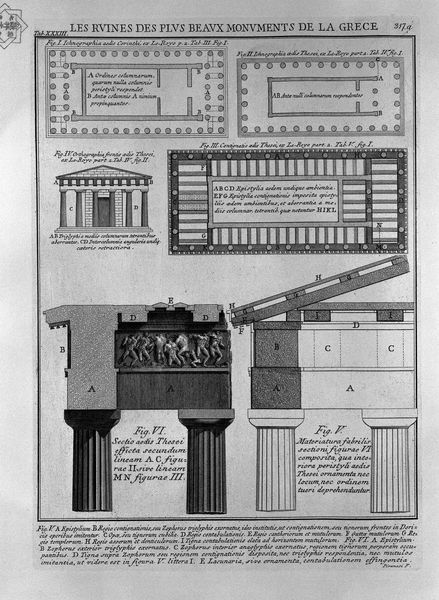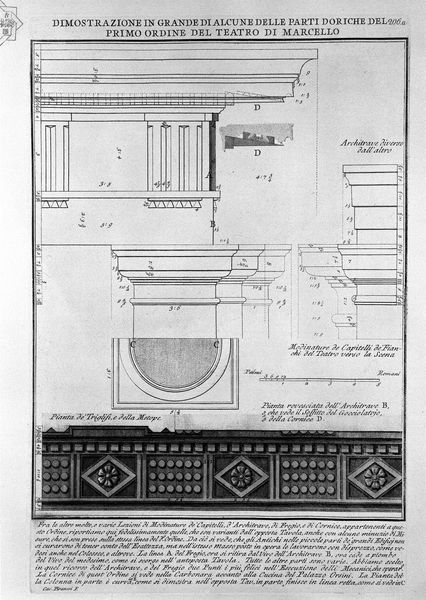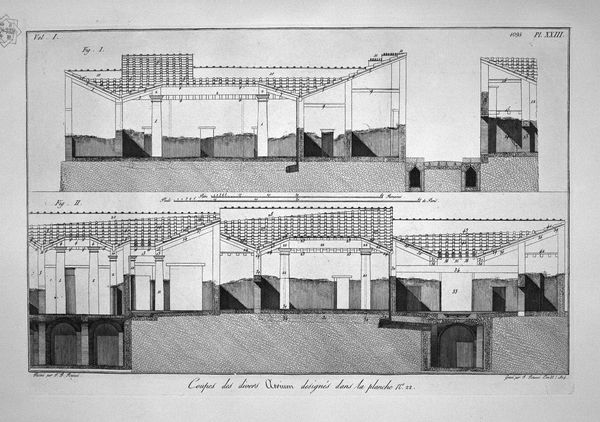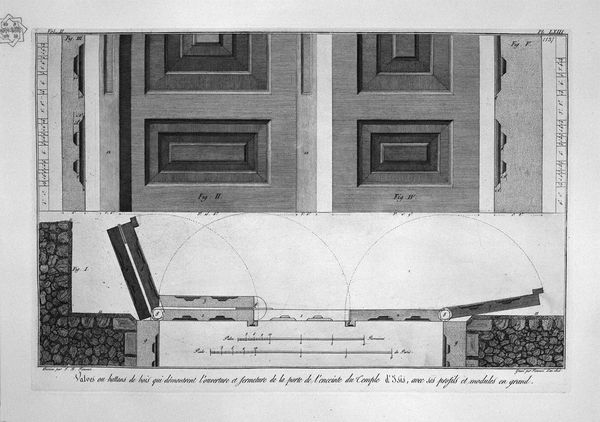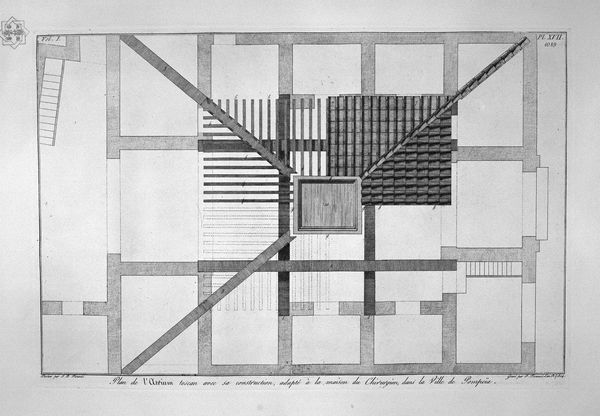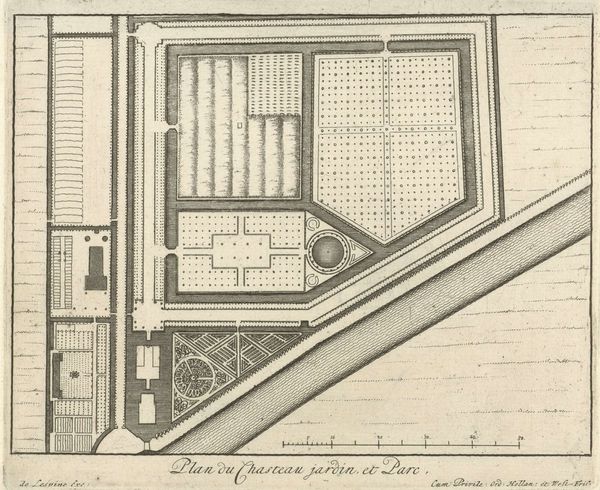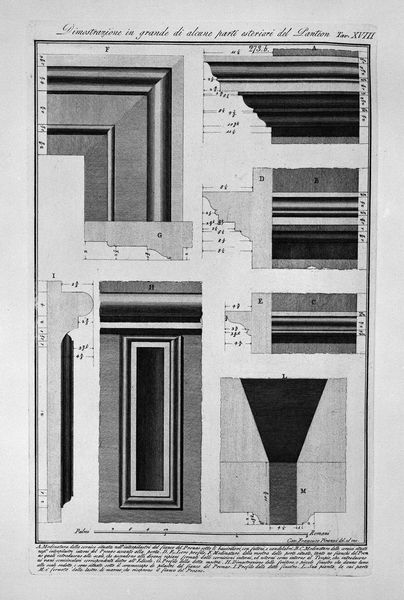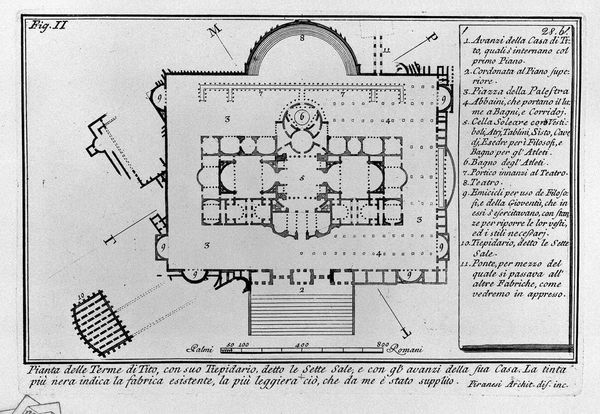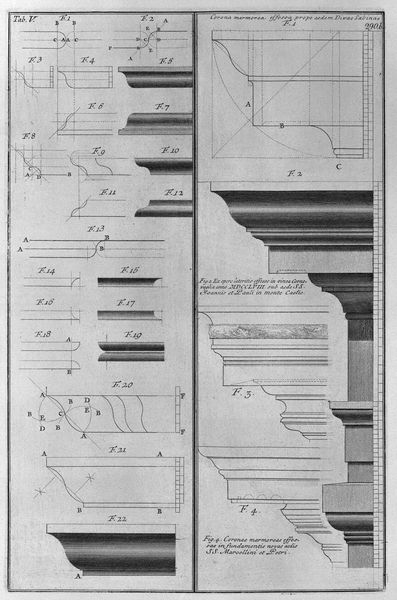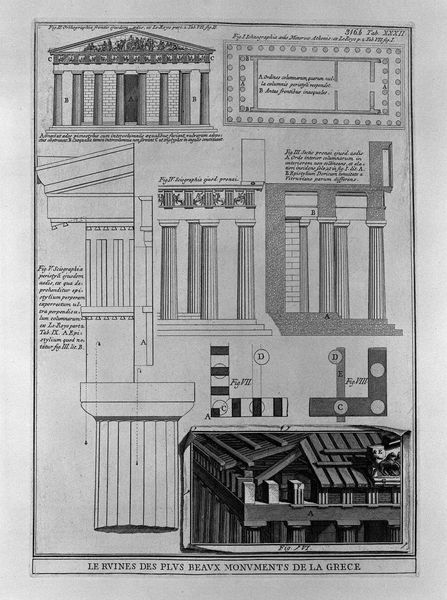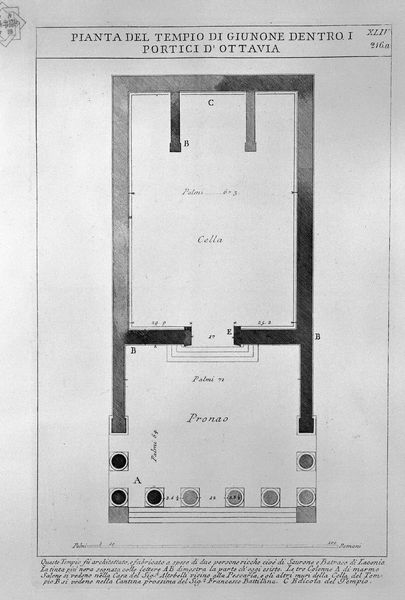
drawing, print, etching, paper, ink, architecture
#
drawing
#
neoclacissism
# print
#
etching
#
greek-and-roman-art
#
paper
#
ink
#
geometric
#
architecture
Copyright: Public domain
Here we have Giovanni Battista Piranesi's depiction of a Tuscan atrium, rendered with the meticulous precision of an engraver's hand. Observe the careful layout; it is a blueprint to the Roman domestic sanctuary. The atrium, with its impluvium collecting rainwater, was not merely architectural. It symbolized the heart of Roman life, a space of family, worship, and social reception. Look at the gabled roof, decorated with palmettes. This motif dates back to ancient Egypt and Mesopotamia. The palmette, originally symbolizing the Tree of Life, was adopted by the Greeks and Romans. Notice how it reappears on friezes and funerary monuments, evolving from a symbol of fertility to one of victory and eternal life. It is the human mind immortalized through architecture. Each roof tile, each palmette, whispers of the cultural memory embedded in these stones, echoing through centuries.
Comments
No comments
Be the first to comment and join the conversation on the ultimate creative platform.
